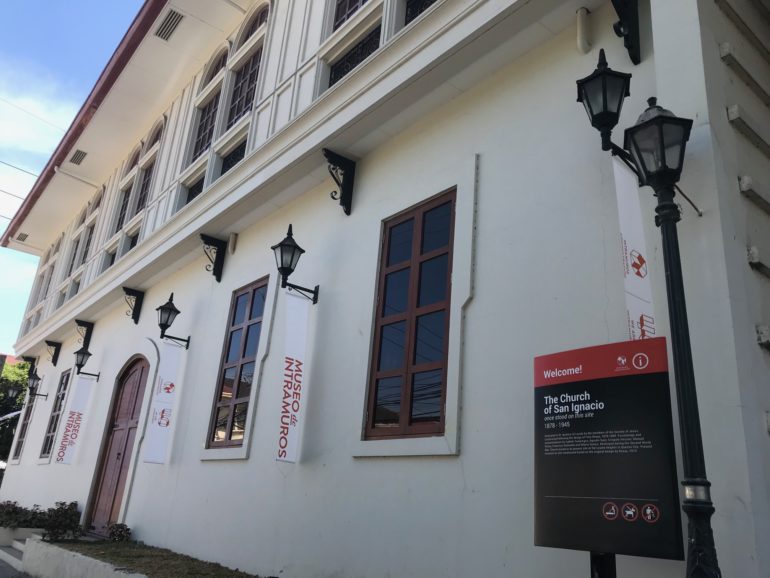Museo de Intramuros: Plumbing Filipino psyche through religious art

Credit to Author: cmiranda| Date: Tue, 30 Apr 2019 23:00:24 +0000
MANILA, Philippines — It’s National Heritage Month and the Department of Tourism (DOT) is inviting the public to explore and learn about the religious side of Philippine culture and history by visiting its newest museum in Intramuros, Manila.
Museo de Intramuros, inaugurated on Monday with Tourism Secretary Bernadette Romulo-Puyat leading the event, was constructed among the ruins of San Ignacio Church and a Jesuit mission house.
The two edifices were destroyed during the battle for the liberation of Manila in World War II.
Managed by the Intramuros Administration (IA), the museum houses the agency’s collection of ecclesiastical art, furniture, vestments, textiles and other artifacts.
Free admission
The museum will be open to the public starting Thursday, and admission is free, according to the DOT.
Building the museum is among the projects of the IA in its 40th year.
The exhibit, the IA said in a statement, presents the story of the evangelization of the Philippines from the perspective of the Filipinos.
“It explores changes in the ‘Filipino’ psyche as colonization introduced a new religion and culture to the natives. With the display of religious images belonging to the IA collection, the exhibition is able to highlight Filipino artistry and craftsmanship that developed from the merging of the indigenous and the foreign,” the IA said.
The country will observe the 500th anniversary of the arrival of Christianity and the first Mass in the Philippines in 2021.
The exhibit is curated by Esperanza Gatbonton, Gino Gonzales, Cecilia dela Paz, Santiago Pilar and Martin Tinio.
Six components
It has six components—the Immaculate Conception; Religious Order; Patronato Real and the Establishment of Parishes; Religious Colonial Paintings; Establishment of a Parish and Sacred Vessels; and Indio Response.
In her 1981 book “Philippine Religious Imagery,” Gatbonton, former consultant to the National Commission on Culture and the Arts for heritage sites, wrote, “This collection of the IA is extremely valuable because it represents the first real attempt to collect and preserve within the Philippines an important aspect of the country’s cultural heritage.”
“The collection affords the viewer a panorama of the various styles and enables him to compare them with the artifacts done abroad in the same medium. We Filipinos have always tended to accept that we were the passive receiver of artistic stimuli from abroad. This collection proves that the Philippines was as much a giver,” she said.
At the museum’s opening, Puyat, also the chair of the IA board of administrators, lauded the efforts of IA Administrator Guiller Asido and the cultural workers behind the museum for “ensuring that the tangible treasures that immortalize our history are now accessible to the public.”
“This project, rooted in passion and a deep love of country, must be emulated and replicated,” she said.
The DOT, Puyat said, would invest in the promotion of cultural tourism not only to diversify the Philippine tourism product, but also to inform the world about Philippine history and culture.
“It is also a platform to ensure that our heritage structures and objects such as these will be preserved and enjoyed by our progeny,” she said.
Established in April 1979, the IA is the DOT’ arm for the restoration, development and promotion of Intramuros, also known as Walled City and Old Manila. —JEROME ANING